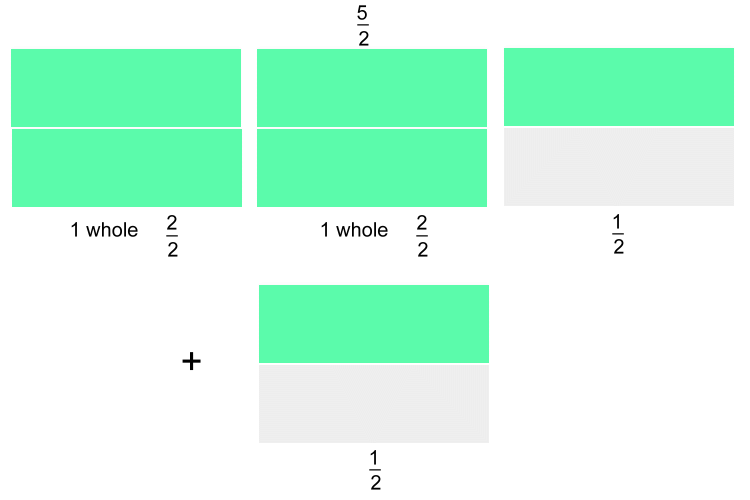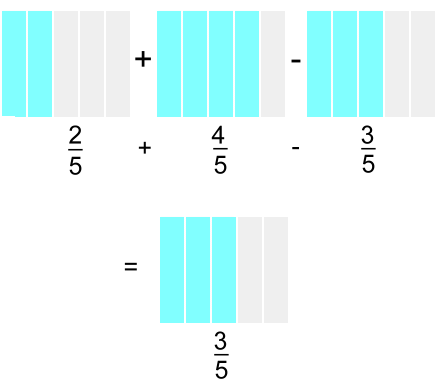 Let's look at how to add and subtract fractions. Part 1: Fractions With the Same Denominators The fractions are made from pieces that are the same size. Example 1:  Here are two fractions. Both represent 'quarters'.
Here are two fractions. Both represent 'quarters'.One has three 'quarters', the other has two 'quarters'. We're adding them. Here's a picture: 
'Adding' means we want the total number of quarters. Since all the quarters are all the same size, we can just count them:  Here's the question and answer without a picture:  You're adding quarters, so you combine the tops (numerators), but the answer is still quarters, so its bottom (denominator) is still 4. "Three quarters plus two quarters is five quarters, or one whole and an extra quarter". Example 2:  Again we have two fractions with the same denominators.
Again we have two fractions with the same denominators.Both represent 'halves'. One has five halves, the other one half. We're adding them. Here's a picture: 
Because the pieces are all the same size (halves) we can just count them.  Here's the question and answer without a picture:  You're adding halves, so you combine the tops (numerators), but the answer is still halves, so its bottom (denominator) is still 2. "Five halves plus one half is six halves, or three wholes". Example 3:  We're counting fifths, so it's just 2 + 4 - 3 = 3 "Two fifths plus four fifths minus three fifths is three fifths" Now let's look at what to do if the denominators are NOT the same. Move on to page two ... |